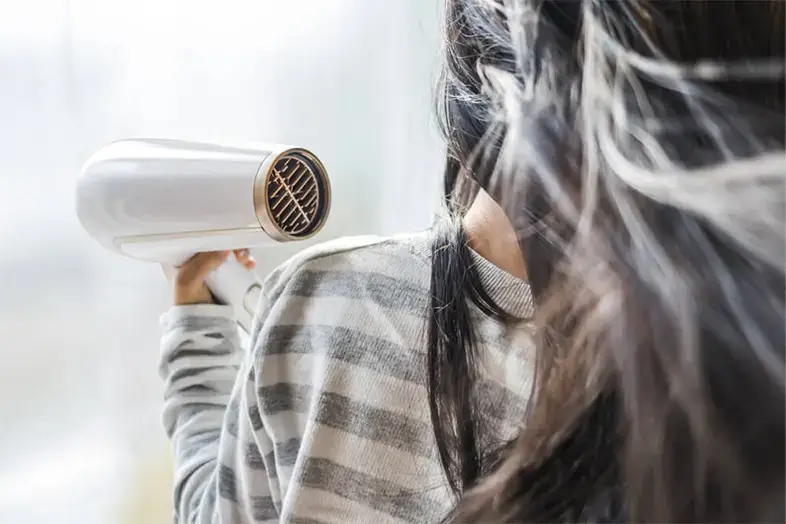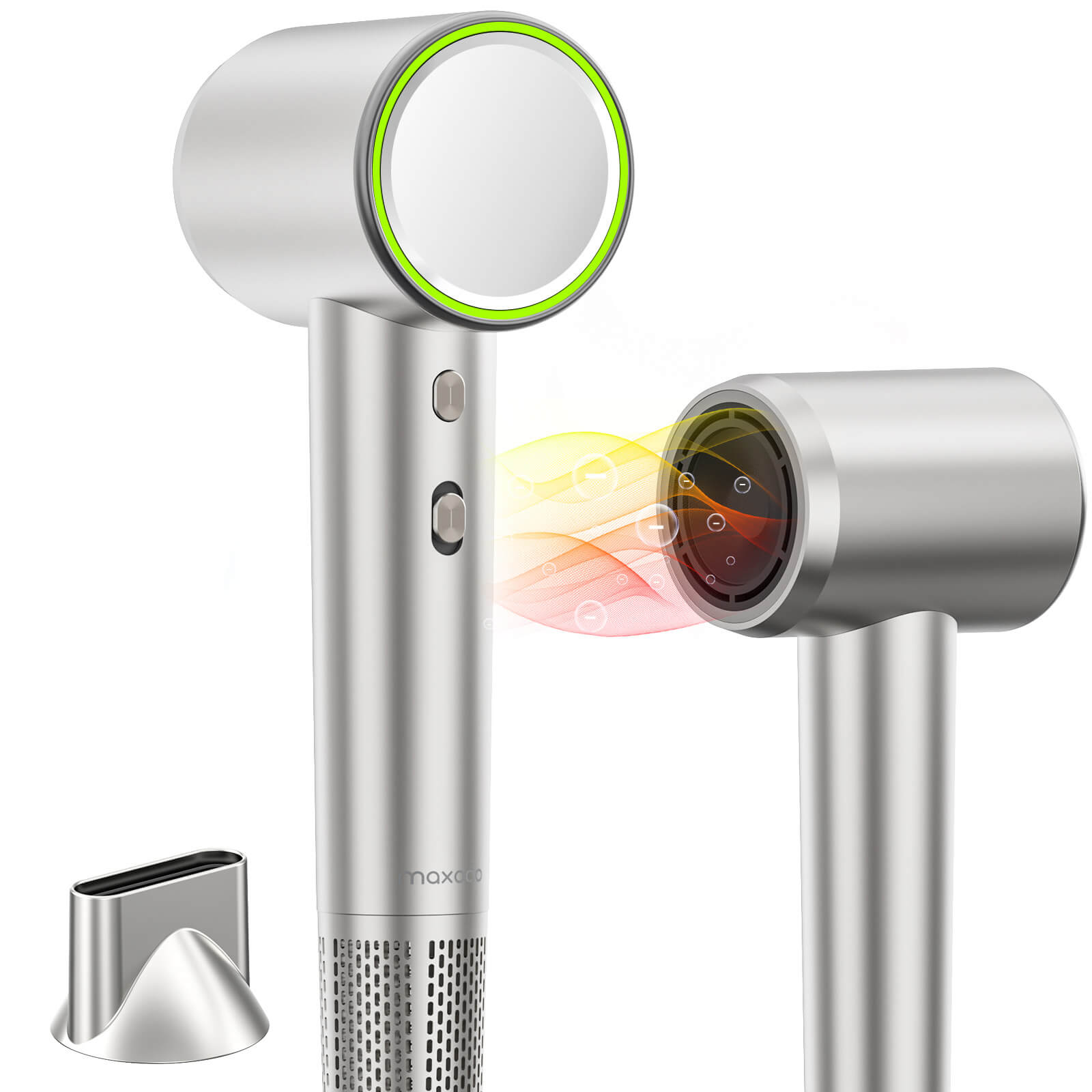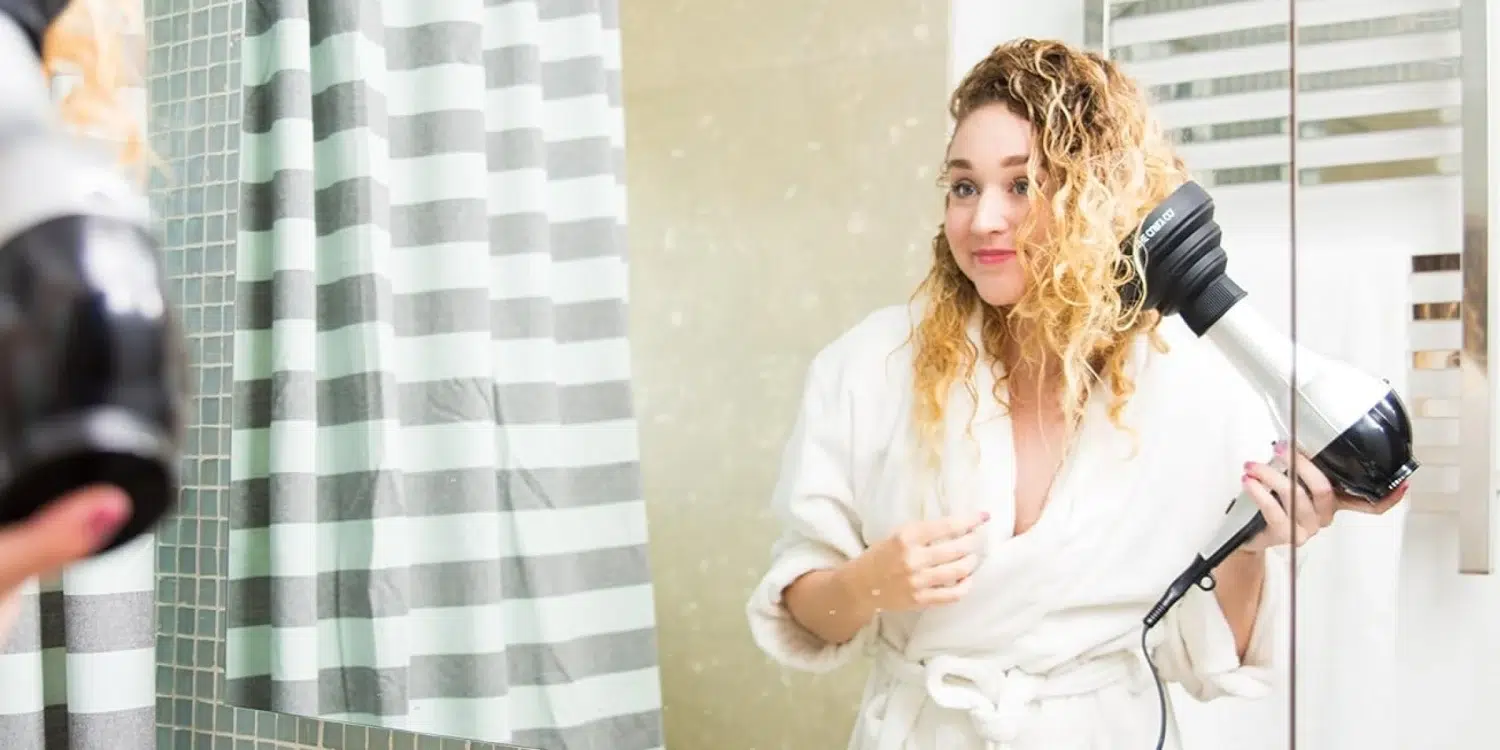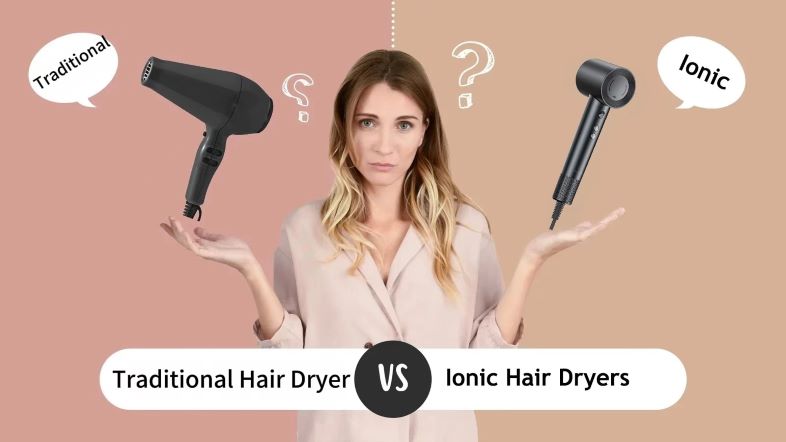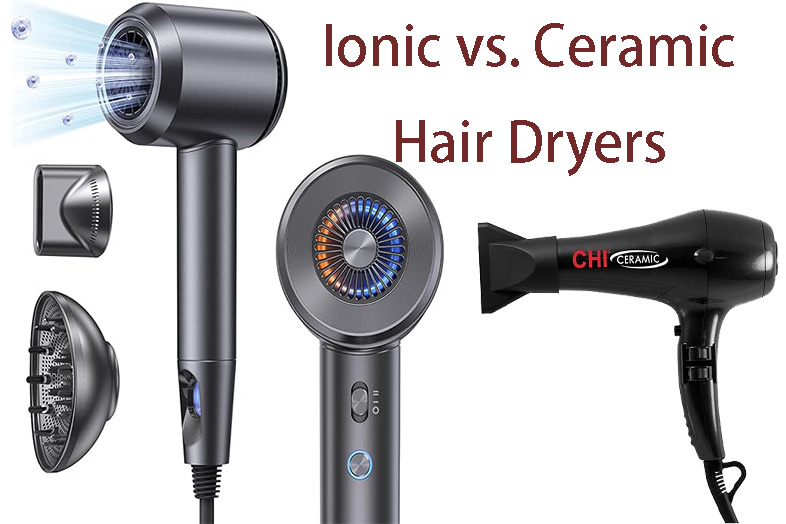Maintaining your hair dryer is not just about preserving its appearance; it’s about ensuring its performance, longevity, and your safety. Regular cleaning prevents the build-up of lint and debris, which can hinder the dryer’s efficiency, leading to longer drying times and increased energy consumption. More importantly, neglect in maintenance can pose fire hazards, as lint accumulation near the motor or heating element can overheat and potentially cause a fire. Moreover, a clean hair dryer maintains proper airflow, ensuring that it operates at its designed temperature and speed settings, thereby protecting your hair from damage due to excessive heat.
Overview of Common Hair Dryer Types
Hair dryers have evolved significantly, catering to diverse hair styling needs and preferences. The most common types include:
Traditional Hair Dryers: These are your basic models, focusing on blowing hot air to dry hair quickly. They are generally more affordable but may not have advanced technology to prevent hair damage.
Ionic Hair Dryers: These dryers produce negative ions that break down water molecules, speeding up the drying process and reducing frizz, which results in smoother and shinier hair.
Ceramic Hair Dryers: Known for their consistent heat distribution, these dryers minimize heat damage by regulating the temperature based on the room’s climate and your hair’s condition.
Tourmaline Hair Dryers: These are considered the most advanced, emitting infrared heat and negative ions, ensuring a gentle and quick drying process, preserving hair health and enhancing shine.
Understanding Your Hair Dryer
Anatomy of a Hair Dryer
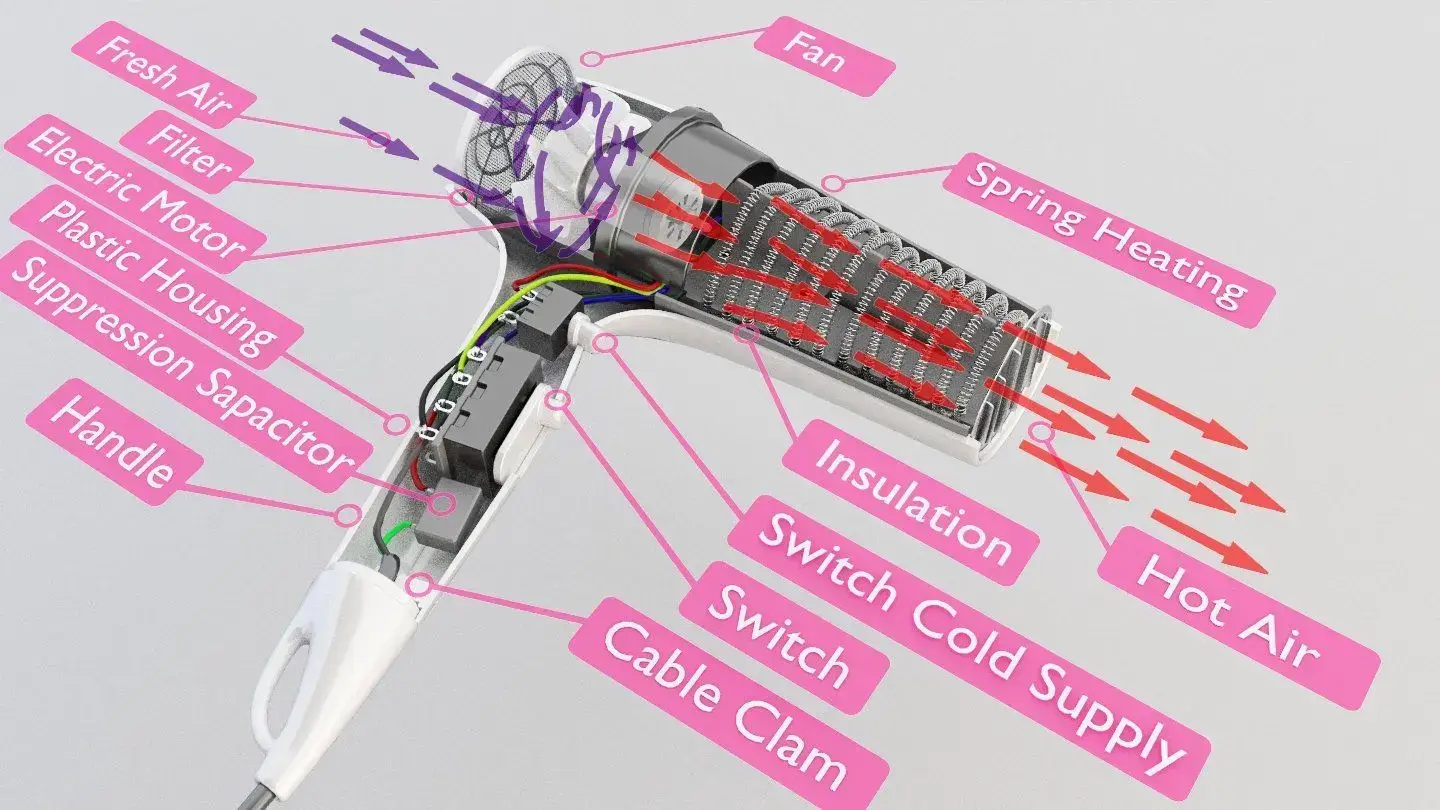
Understanding the basic components of your hair dryer can significantly aid in its proper maintenance. A typical hair dryer consists of the following parts:
Body: The outer casing that houses all components.
Motor and Fan: The motor powers the fan, which draws in air.
Heating Element: Converts electrical energy into heat to warm the air drawn by the fan.
Air Intake and Filter: Allows air entry and filters out lint and debris.
Nozzles and Attachments: Focus or spread the flow of air for specific styling needs.
Identifying Your Model and Its Specific Needs
Each hair dryer type has unique maintenance requirements. For instance, ionic and tourmaline models may need specific cleaning agents to protect their components, while ceramic elements must be handled with care to avoid cracking. Always refer to the user manual for model-specific maintenance guidelines.
Safety First: Pre-Cleaning Preparations
Unplugging and Basic Safety
Before starting any cleaning procedure, ensure the hair dryer is unplugged to avoid electric shock. Allow the device to cool down completely if it was in use recently. Inspect the cord and plug for any damage, and avoid handling the device if you notice exposed wiring or other electrical issues.
Tools and Materials You Will Need
Gather the following tools and materials for an effective cleaning process:
Soft-bristled Brush or Toothbrush: For gentle removal of lint and debris.
Microfiber Cloth: To wipe down the exterior without scratching it.
Cotton Swabs: For cleaning hard-to-reach areas.
Isopropyl Alcohol: To sanitize and remove stubborn residue.
Screwdriver: Some models may require disassembly for thorough cleaning.
User Manual: To refer to specific instructions and warnings.
General Cleaning Tips for All Hair Dryer Models
Exterior Cleaning: Step-by-Step Guide
Unplug and Cool Down: Always ensure your hair dryer is unplugged and completely cool before beginning any cleaning.
Wipe Down: Use a slightly damp, soft cloth to gently wipe the exterior. Avoid letting water seep into the interior components.
Disinfect: For a deeper clean, especially for hairdressers or shared dryers, lightly spray a disinfectant onto a cloth and carefully wipe the handle and body.
Dry Completely: Before storing or using, ensure the hair dryer is thoroughly dry to avoid any electrical issues.
Interior Dust Removal Techniques
Filter Access: Locate the rear filter. Many models have a removable filter cover that can be twisted or popped off.
Remove Lint and Debris: Use a soft brush (a clean, unused paintbrush works well) to gently remove lint and debris from the filter.
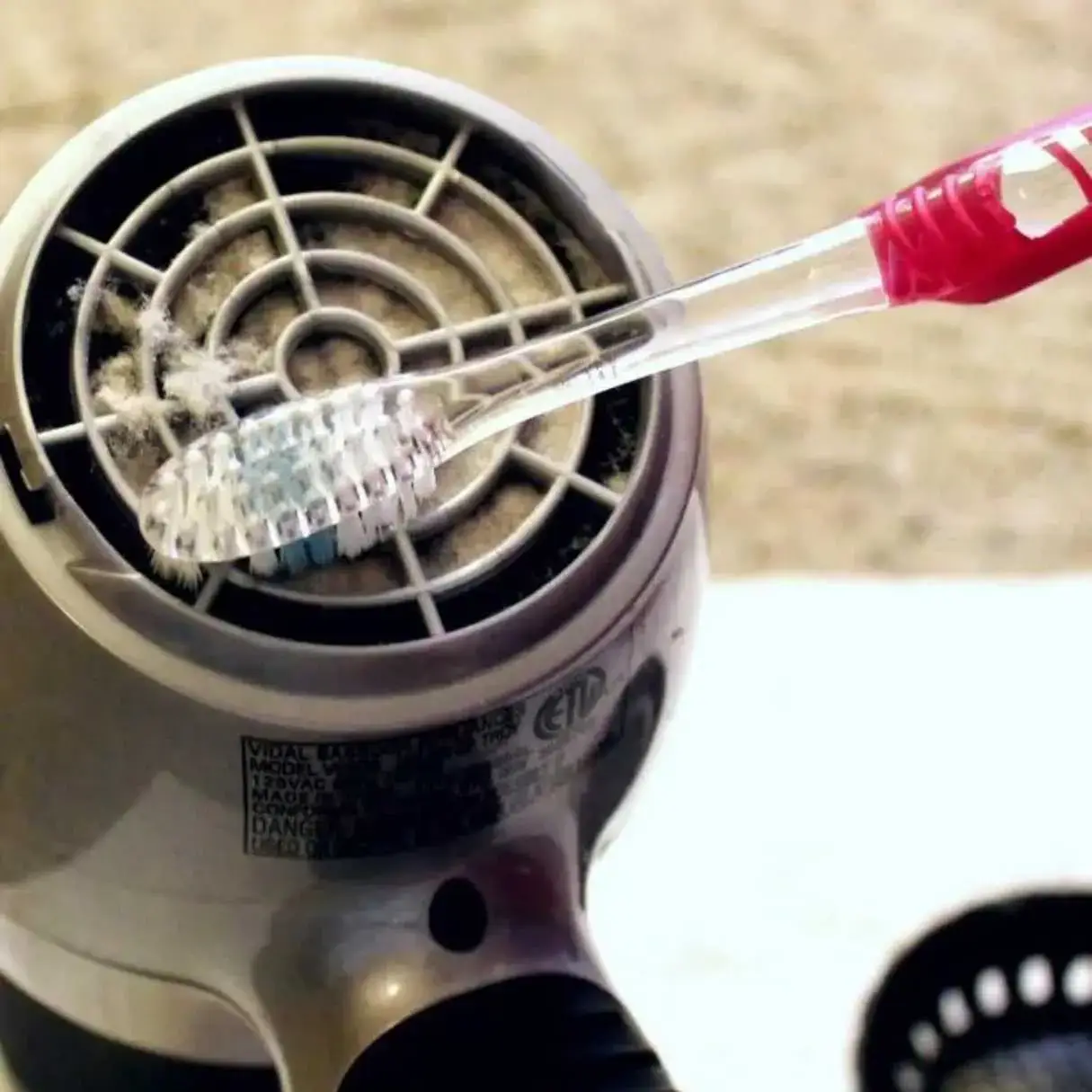
Vacuum if Necessary: For stubborn dust inside the filter area, use the smallest attachment of your vacuum cleaner to gently suck out dust.
Reassemble Carefully: Once cleaned, make sure the filter and any cover are securely reattached.
Model-Specific Cleaning Guides
1. Traditional Hair Dryers
Daily Maintenance Tips:
After each use, remove any visible lint from the filter.
Store the dryer in a clean, dry place to avoid dust accumulation.
Deep Cleaning Process:
Monthly, or as needed, remove the filter and wash it gently with warm, soapy water.
Allow the filter to completely dry before reattaching.
2. Ionic Hair Dryers
Understanding Ionic Technology:
Ionic hair dryers emit negative ions which reduce static and frizz, speeding up the drying process. This technology requires careful maintenance to function properly.
Special Considerations for Ionic Models:
Avoid using harsh chemicals or abrasives that might damage the ionic generator.
Ensure the inlet and outlet are free from dust to maintain ion flow.
3. Ceramic Hair Dryers
Benefits of Ceramic Components:
Ceramic elements provide even heat distribution and emit infrared heat that dries hair gently, reducing damage.
Ceramic-Specific Cleaning Methods:
Use only soft cloths and brushes to clean ceramic parts to avoid scratching.
Regularly check the ceramic parts for any cracks or damage, which can affect performance.
4. Tourmaline Hair Dryers
Tourmaline Technology Explained:
Tourmaline hair dryers emit infrared heat and negative ions, making them very effective but also sensitive to dust and debris.
Maintaining Tourmaline Integrity During Cleaning:
Clean the tourmaline parts gently to prevent any damage to the material.
Ensure that the dryer is stored in a place where it won’t be dropped or banged, as tourmaline is a precious stone that can crack or break.
Troubleshooting Common Issues
Recognizing Signs of Clogging and Overheating
A hair dryer’s performance can significantly diminish due to clogging and overheating, often a result of lint and hair buildup. Key signs include:
Reduced Airflow: If your hair dryer seems to be working harder to emit the same amount of air, it might be clogged.
Unusual Noises: Rattling or humming noises can indicate a blockage that’s causing the motor to strain.
Excessive Heat: While hair dryers are meant to emit hot air, an overheated exterior or an uncomfortably hot airflow can signal clogs that are forcing the dryer to work overtime.
When to Seek Professional Help
While regular maintenance can be handled at home, some scenarios require a professional’s touch, especially when:
Electrical Issues Arise: If your hair dryer sparks, smokes, or has a frayed cord, it’s time for professional repair or replacement.
Internal Components Fail: If after cleaning, the dryer still doesn’t function correctly or makes unusual sounds, internal components might be damaged.
Warranty Concerns: Check your warranty before attempting any deep cleaning or repairs, as some actions might void it.
Maintaining Hair Dryer Performance Post-Cleaning
Routine Maintenance Schedule
Consistency is key to prolonging the life of your hair dryer:
After Each Use: Remove any visible lint from the filter.
Weekly: Conduct a more thorough filter cleaning, especially if you use the dryer daily.
Monthly: Check for signs of wear and tear, such as cord damage or loose parts.
Best Practices for Extending Hair Dryer Life
Extend your hair dryer’s lifespan by:
Storing Properly: Keep it in a dry place and avoid wrapping the cord tightly around the dryer.
Using Correctly: Avoid dropping the dryer and use it on a lower heat setting when possible to reduce wear on the components.
Regular Maintenance: Stay on top of cleaning and don’t ignore the early signs of problems.
Conclusion
Regular maintenance prevents clogging and overheating, thereby extending the life of your hair dryer.
Recognize signs of malfunction, such as reduced airflow, unusual noises, and excessive heat.
Seek professional help for electrical issues or when in doubt about internal component failures.
Maintain a routine cleaning schedule and follow best practices to ensure optimal performance.
Your hair dryer is an investment in your personal grooming routine. By dedicating a small amount of time to its maintenance, you not only ensure its longevity but also its safe operation. Remember, a well-maintained hair dryer is more than a tool—it’s a companion in your daily life, contributing to your overall well-being and appearance. Regular maintenance is not just about preserving a device; it’s about sustaining the quality and enjoyment of your styling routine.
